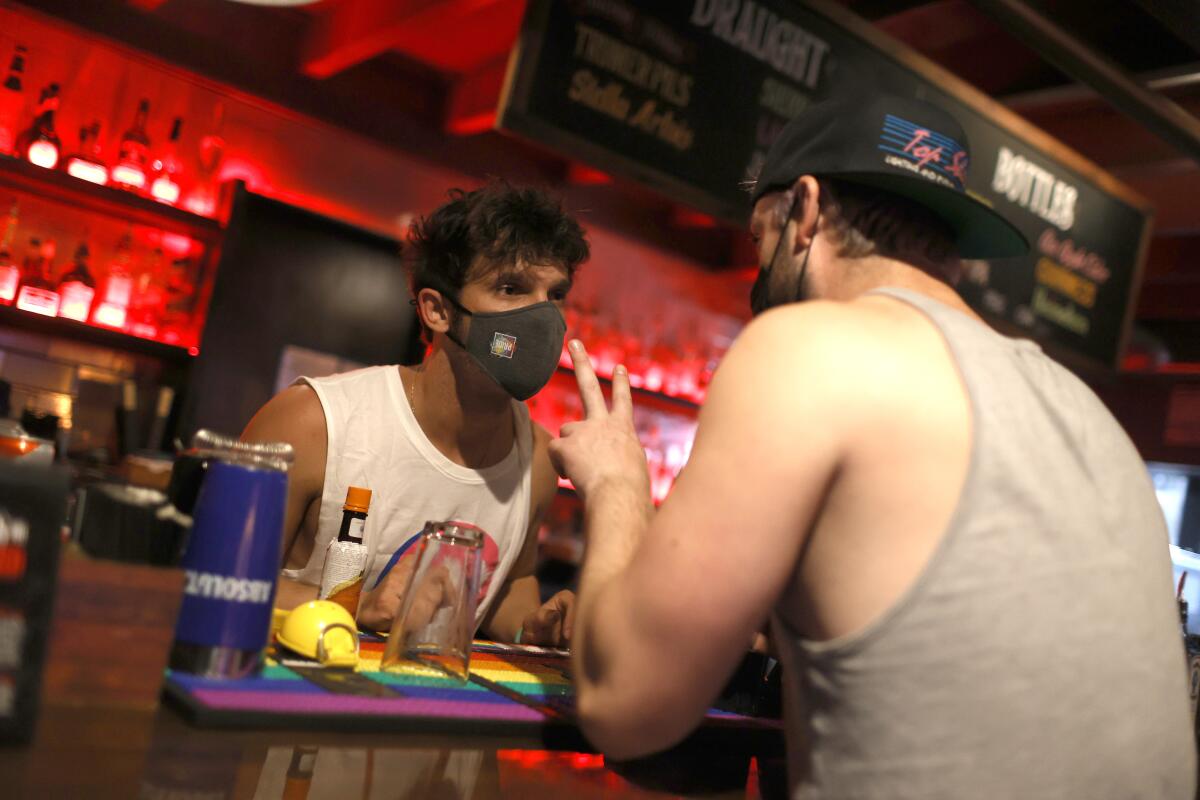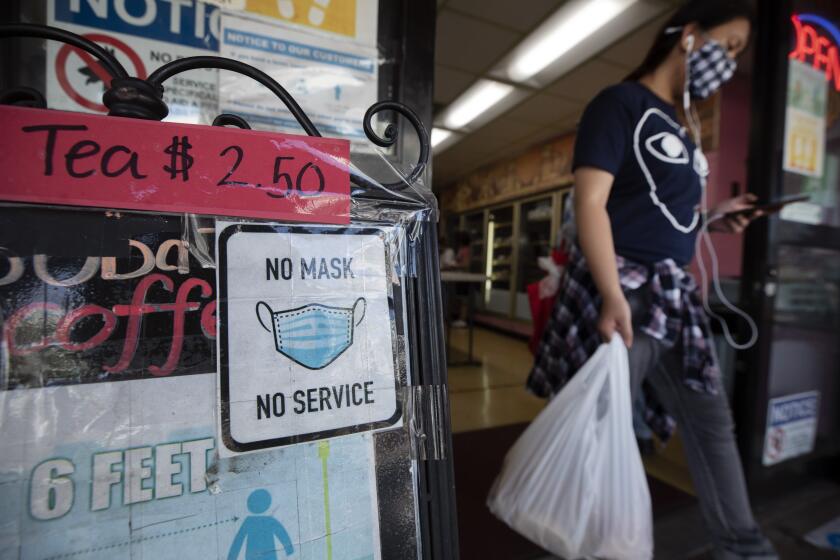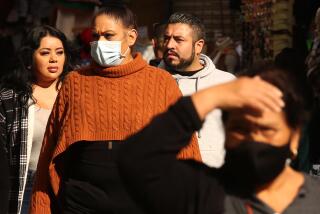L.A. County took steps early to combat Delta variant. We should know soon if it worked

- Share via
When Los Angeles County last month imposed a mask requirement for indoor public settings, it seemed like an outlier. Some wondered whether officials were going too far.
But the Delta variant has wreaked more havoc since then, causing COVID-19 to spread, primarily among people who have not been vaccinated. People who are vaccinated are strongly protected against contracting the coronavirus and, if they are infected, tend to get less sick.
Now a growing number of other counties are following L.A. County’s lead. On Monday, seven of nine counties in the Bay Area, as well as the city of Berkeley, announced a similar mask requirement for indoor public spaces.
The question is whether the mask mandate can help slow the new surge. L.A. County should be among the first to get data back. Here is what we know.
How effective are new mask requirements?
While Los Angeles County officials are hoping the mask rules will slow the new surge, it will take at least several more days to know if the measure is effective.
Based on an assessment of transmission rates this week, county health officials issued a statement saying they “will have a more complete picture to inform this discussion by the end of the week.”
COVID-19 cases and hospitalizations are rising, but remain far below the winter peak. Growth last week slowed compared to the week prior, according to county Public Health Director Barbara Ferrer.
Dr. Neha Nanda, medical director of infection prevention and antimicrobial stewardship at Keck Medicine of USC, said cases are still rising, reflecting a gap between the implementation of the order and its widespread adoption. While it might be too soon to see the precise impact of masking, Nanda was confident it would help rein in the virus.
Rules and guidance about face masks have changed throughout the pandemic. Here’s how the CDC’s advice has evolved.
With the mask mandate, “our numbers will not soar,” said Nanda, who leads preparation for and response to emerging infectious diseases at Keck. “They might still rise,” she added, “but it just may not be so exponential.”
Case rates and hospitalizations so far haven’t matched the devastating levels seen last fall and winter. Preventive measures could help ensure the latest surge doesn’t turn into another crisis, said Richard Carpiano, professor of public policy and sociology at UC Riverside.
“The idea is that you don’t want to wait until it’s too bad,” he said. “You want to get it kind of ahead of time.”
What about a statewide mandate?
Last week, California urged everyone — even those fully vaccinated — to wear masks indoors while in public. But there is no statewide requirement, and many California counties have not taken the same action as L.A. County and the Bay Area.
“As always, as occurred in parts of the Bay Area today, local health jurisdictions may put in place guidance more restrictive than the state based on local conditions,” the California Department of Public Health’s communications office said in a statement Monday.
Nanda, of Keck Medicine, said that a patchwork of rules could diminish the effectiveness of the reinstated mandates.
People are mobile, and so is the virus. As a result, Nanda expects the effects of the mandates will not be “as impressive” if counties have different requirements.
Carpiano said he doesn’t foresee much more guidance coming down from Sacramento.
The politicization of mask mandates and other COVID-19 restrictions could make it a gamble, he said, especially in light of Gov. Gavin Newsom’s upcoming recall election. And he doesn’t see every county falling in line voluntarily. Instead, he envisions the mandates will be “sort of scattershot” throughout the state.
How about vaccine mandates?
A growing number of institutions are trying that too.
On Monday, Kaiser Permanente announced it will make COVID-19 vaccines mandatory for all employees and physicians. The Oakland-based healthcare giant said nearly a quarter of its 240,000 employees remain unvaccinated.
Some cities including Los Angeles, San Francisco and Pasadena are requiring proof of vaccination from employees. University of California and Cal State University are also requiring vaccinations for students returning to campus.
Those who work for the state of California or in public or private healthcare settings soon will be required to show proof they’ve been vaccinated against COVID-19.
If they aren’t vaccinated, or decline to show such documentation, they’ll have to be tested regularly for infection.
A growing number of restaurants want proof of vaccination or a recent negative test. That uptick followed announcements by at least 33 Los Angeles bars that they also had taken that step, according to L.A. Taco, which has published a running list.
And on July 26, the San Francisco Bar Owner Alliance announced that it was recommending that its 300-plus member establishments require such proof from patrons who wished to sit indoors.
More to Read
Sign up for Essential California
The most important California stories and recommendations in your inbox every morning.
You may occasionally receive promotional content from the Los Angeles Times.














